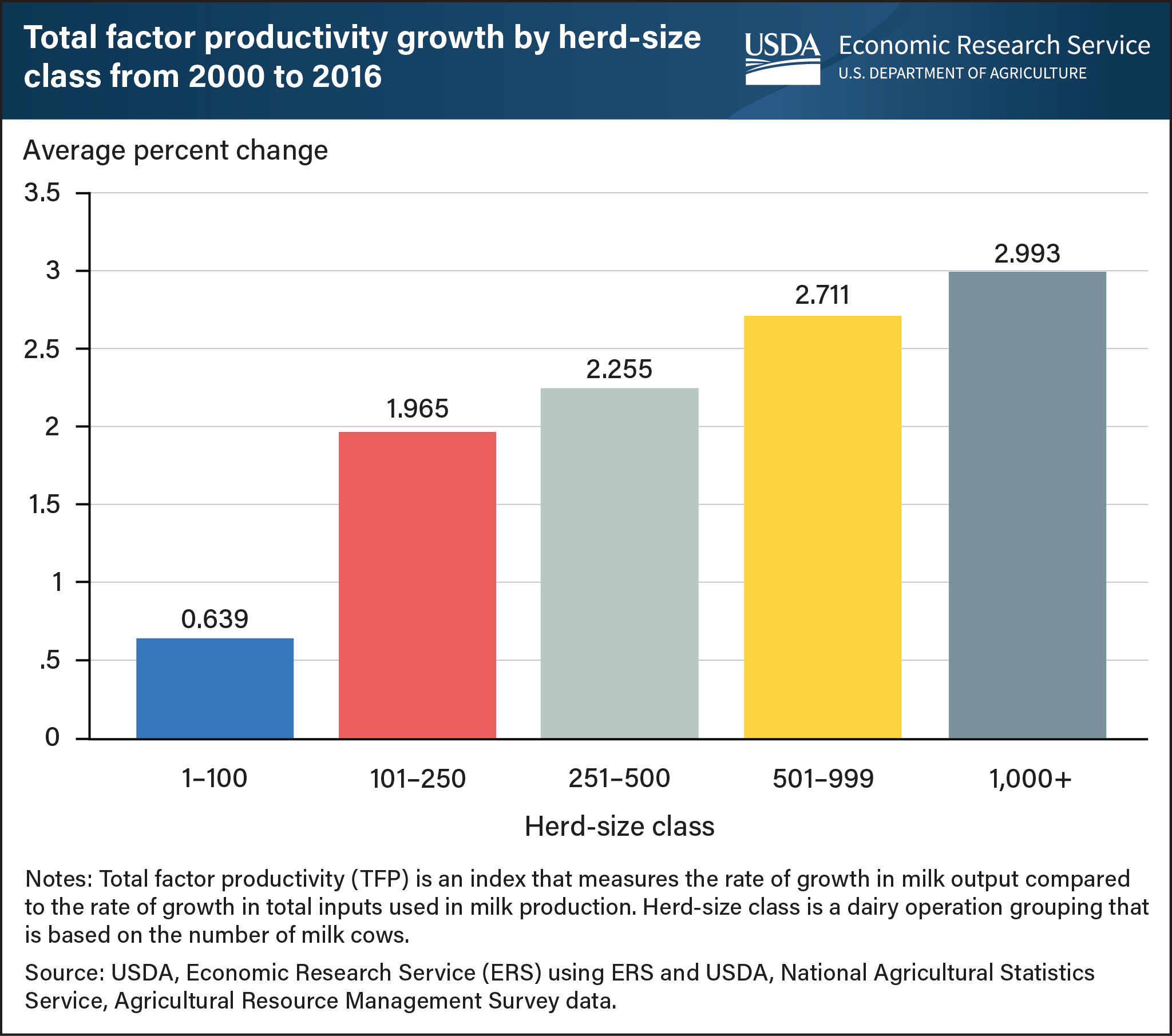Larger dairy operations experienced faster productivity growth compared to smaller counterparts
- by Eric Njuki
- 3/30/2022

The U.S. dairy sector has experienced a gradual shift in milk production away from small farms toward larger dairy operations. USDA, Economic Research Service (ERS) research indicates that this shift in production from small dairy herd-size farms to large dairy herd-size farms mirrors total factor productivity (TFP) growth across the dairy sector. Total factor productivity (TFP) is a broad measure of agricultural productivity that compares the total output to the total land, labor, capital, and material inputs used in farm production. TFP measures how inputs are combined to produce output. When the total output increases faster than total inputs, TFP is said to be growing. Between 2000 and 2016, the largest dairy operations (those with more than 1,000 milk cows) experienced a TFP growth rate of 2.993 percent per year. Meanwhile, TFP growth for the smallest operations (those with fewer than 100 milk cows) increased at an annual rate of 0.639 percent. TFP growth across all operations was primarily driven by technological progress—growth associated with innovations in systems, processes, and techniques that convert inputs into milk output—and environmental effects that positively impacted feed availability. The slow growth in TFP across smaller dairy operations was primarily due to not operating the farms at a higher, optimal scale; the inability of managers to successfully combine various inputs at their disposal to maximize output; and unfavorable environmental factors that impacted the general well-being of cows. This chart was drawn from the ERS report Sources, Trends, and Drivers of U.S. Dairy Productivity and Efficiency, published February 17, 2022.

